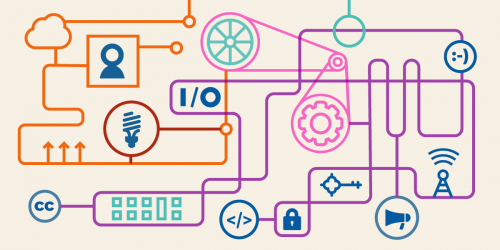Tor is a valuable tool for browsing the web anonymously, but since it's powered by volunteers willing to share some bandwidth and a computer, it's always in need of additional help. Which is why EFF is announcing the Tor University Challenge, a project asking universities to start running Tor relays on campus. Today, we're launching with support from 12 universities. With your help, we can add more universities to strengthen the Tor network to improve one of the best free privacy tools available today.
In 2011, we launched our first Tor Challenge, which resulted in 549 new relays. By 2014, after we launched our second Tor Challenge, we had counted 1,635 new relays. This time around, we're focusing on getting more Tor relays onto college campuses. Universities are especially well-suited for Tor relays because they often offer fast internet, have lots of technical expertise available (including professors, students, and IT teams), and value freedom of expression. Setting up a Tor relay on your college campus will help make Tor faster and better, because the more relays that exist, the better the experience of using Tor gets for everyone.
What is Tor?
Tor is a network and software package that consists of two parts: a web browser you can download to browse the internet, and a volunteer network of computers that make the Tor software work. Using Tor is as simple as downloading the Tor Browser (give it a try yourself, if you haven't used Tor before, it’s available for Windows, Mac, and Linux). Browsing the web is a little slower than you might be used to with Tor, but otherwise works exactly like any other web browser. The Tor Browser also gives you access to Tor onion sites—hidden websites that provide end-to-end encryption and anonymity—that help circumvent censorship. EFF, along with Certbot and our Surveillance Self-Defense guides, are all available as Tor onions.
The second part is the volunteer-run network of computers that anonymizes web traffic. Tor protects your identity by hiding the source and destination of your internet traffic, which helps prevent anyone from knowing who you are or what you're looking at. Tor does this by routing your web traffic through "relays," which, like the name implies, receive the traffic and pass it along to the next relay. Anyone can run a Tor relay on just about any computer, but because relays need a lot of bandwidth, it's not always easy (or possible) to do so. Universities often don't have the sorts of bandwidth limitations the rest of us may contend with, so they're a good fit for relays.
Tor sometimes gets a bad rap because, like any other tool, it can be used by criminals. But criminals have all sorts of other tools that do much of the same things as Tor, and there are a number of very real benefits to society for supporting the Tor Project. For example, Tor is a required component of SecureDrop, a tool used by dozens of news organizations like The Washington Post, ProPublica, and The New York Times to facilitate secure information sharing. Though it's not as well known as Tor, SecureDrop has been used in countless news stories, including The Intercept's reporting on violations of attorney-client privilege of prisoners. Tor is also a vital tool for censorship circumvention that we've seen used in Russia and in Iran, among other places. If you run into skeptics on campus, point to these types of examples to get the conversation moving in a productive direction.
Get Started
Tor is a critical tool in the fight against online surveillance and government censorship, and with the help of your university, it can become even better than it is today.
If you're a professor, you're already in a great position to start a Tor relay, and can likely get started today. If you're a student, you'll likely need to gather together some faculty allies before getting it running, but we've got tips for doing so here. Establishing a Tor relay on campus is a learning experience for everyone involved, from professors to students, and a great way to find like-minded people to work on similar projects with in the future. A relay can run on just about any computer, and in some cases, requires almost no maintenance once you have the software installed and working. If you want to learn more about the technical details of operating a relay, the Tor Project has a number of guides worth checking out.
After your relay is up and running for a year, send us an email, and we'll send you a challenge coin in return. Head over to our Tor University Challenge site for more information about the relays, frequently asked questions, form letters for finding allies on campus, and more.












